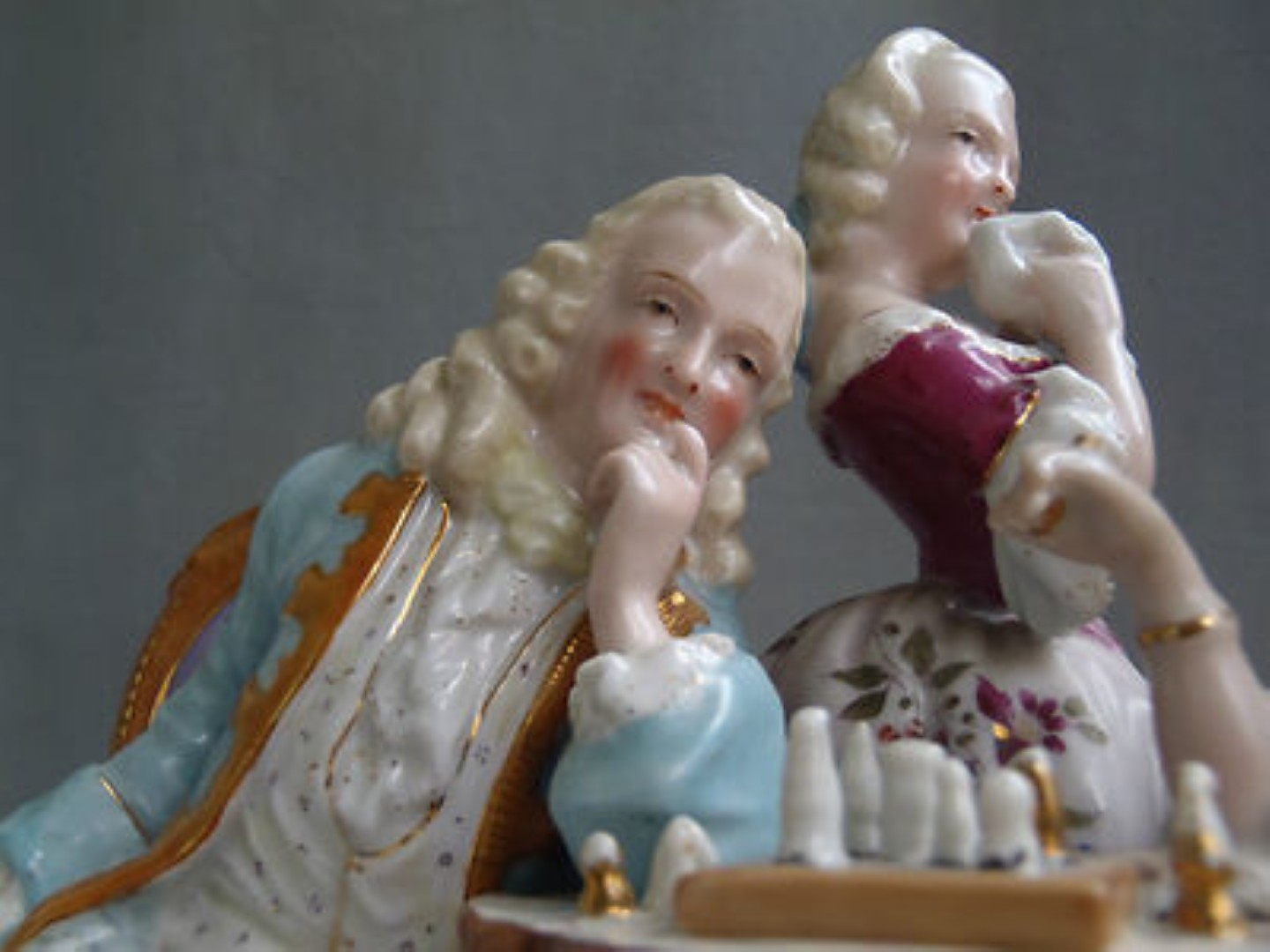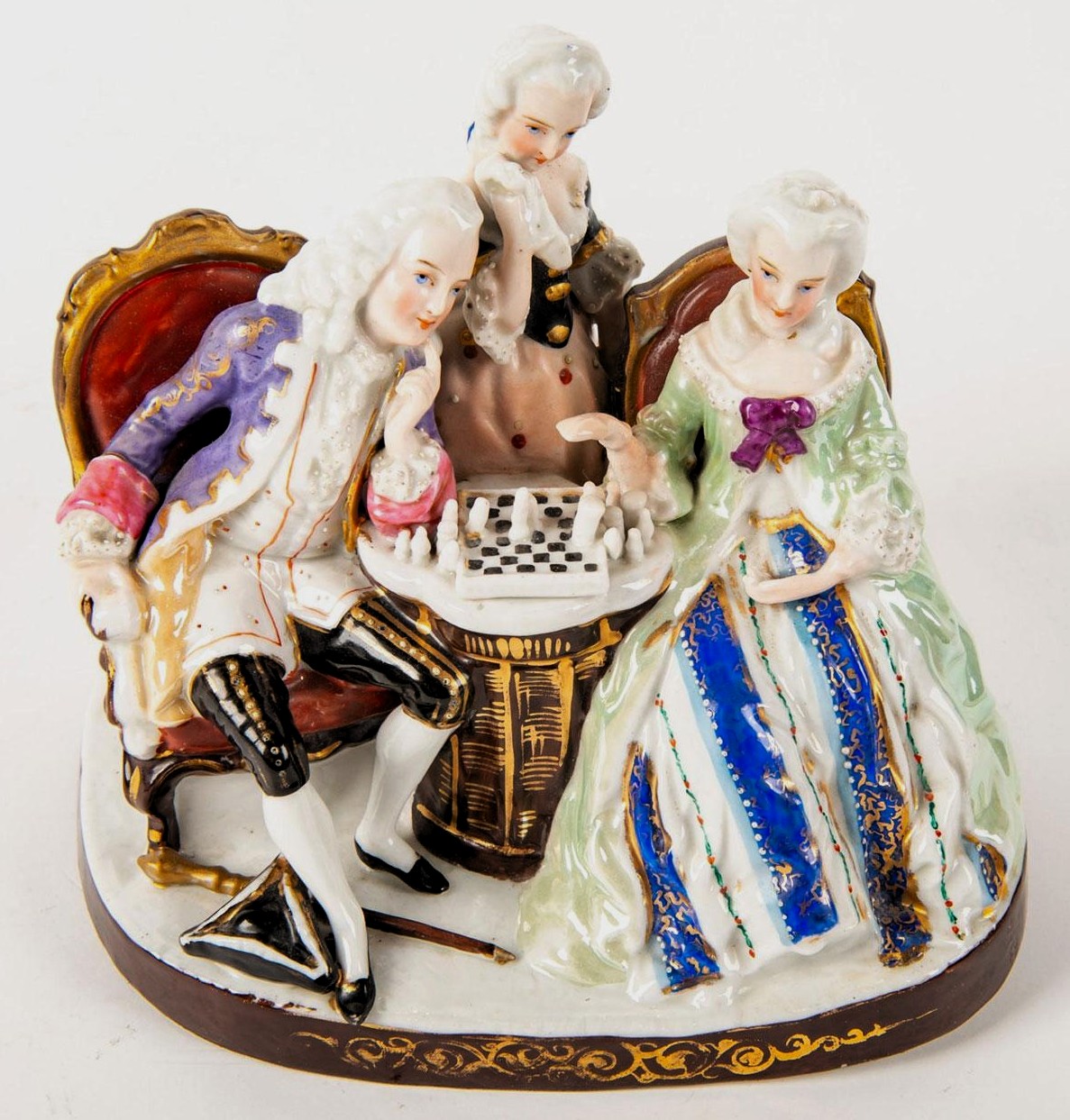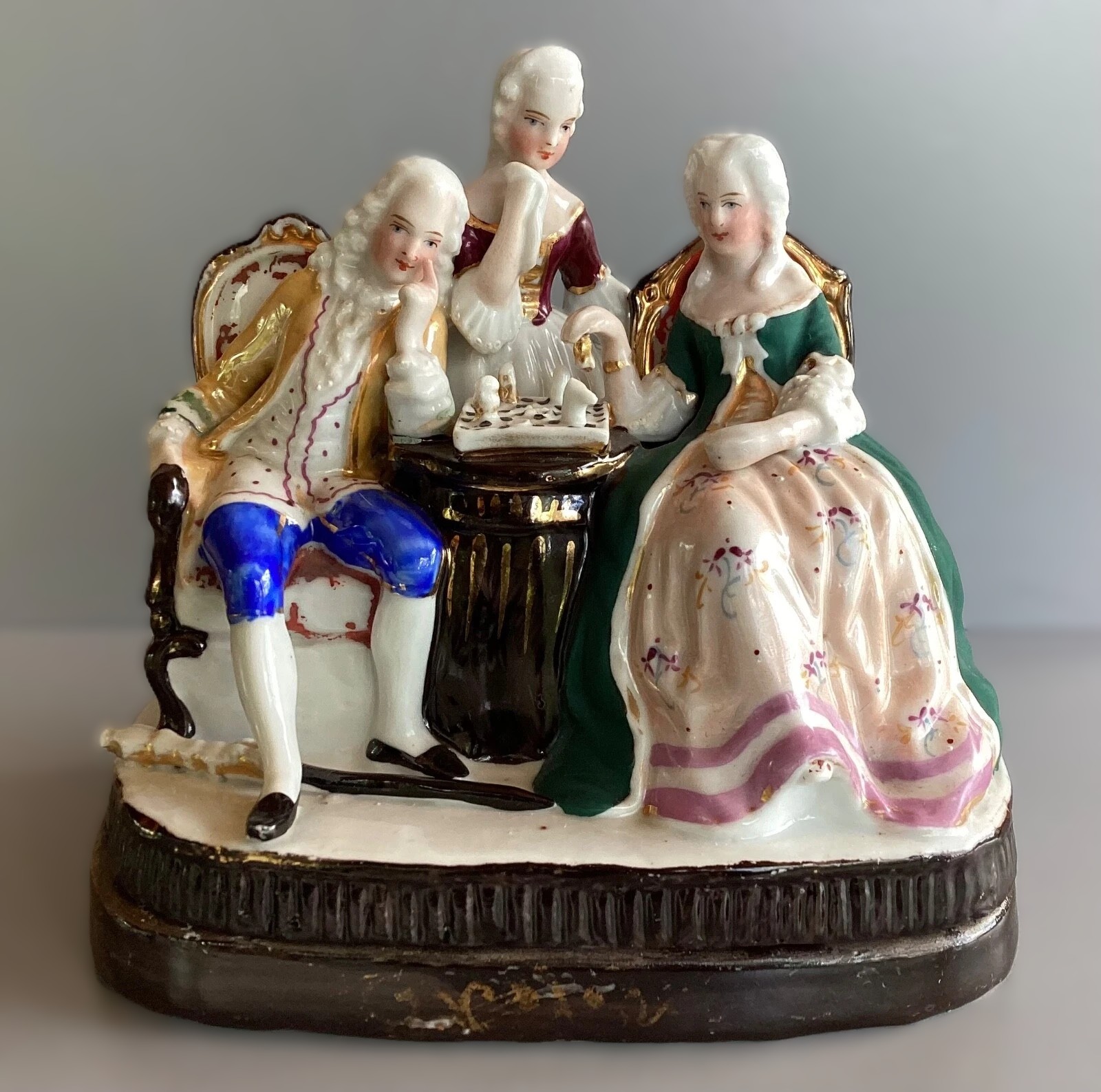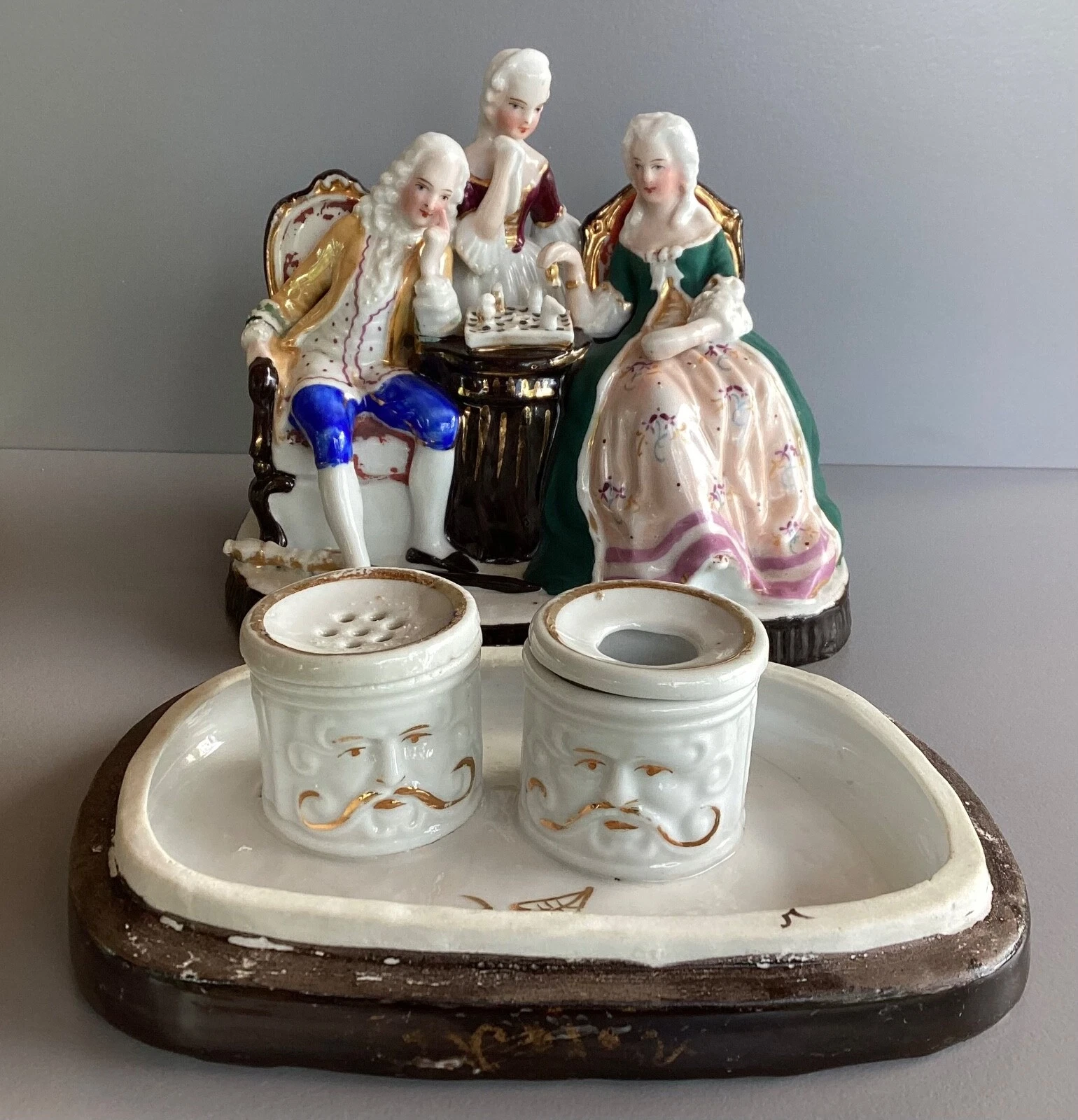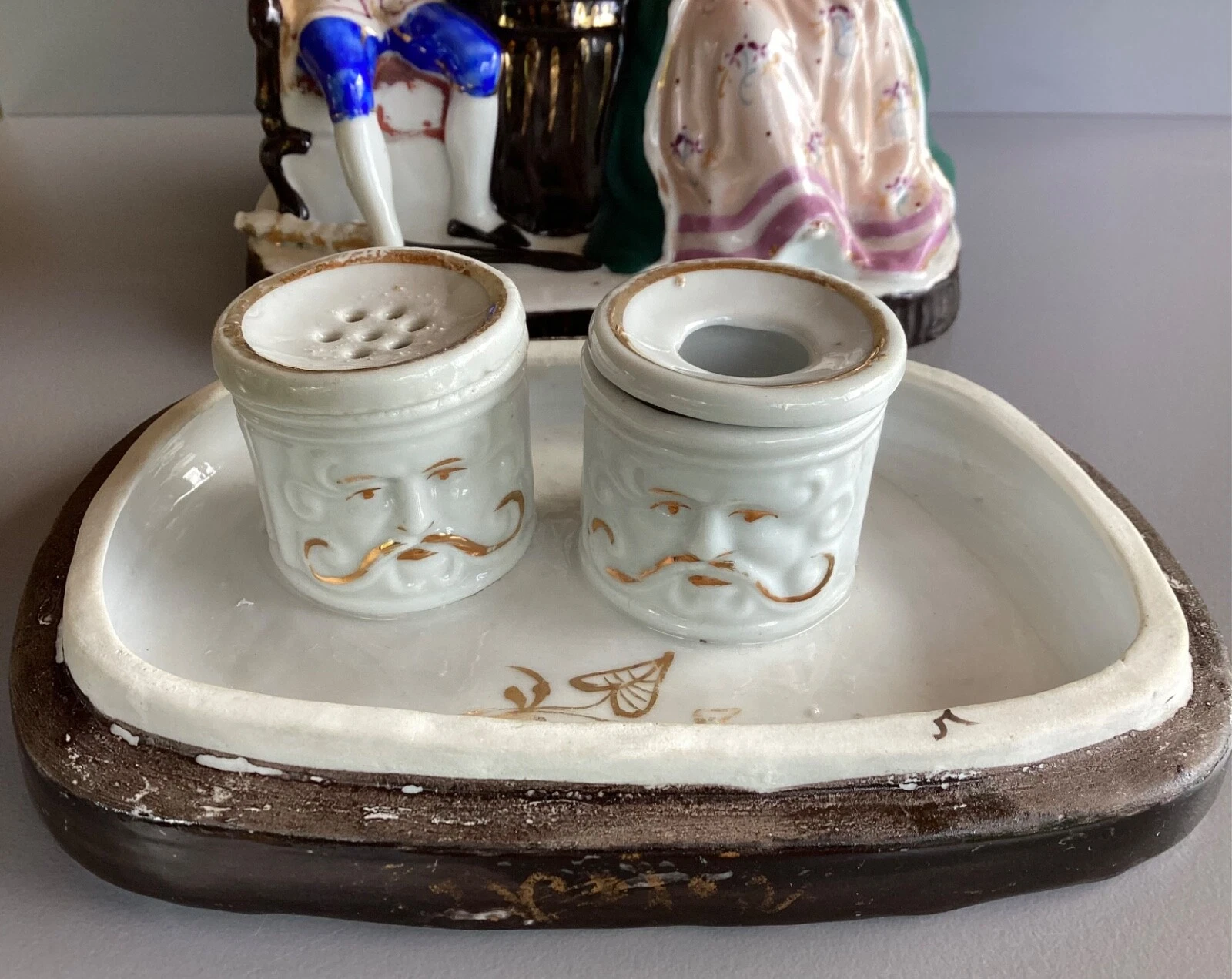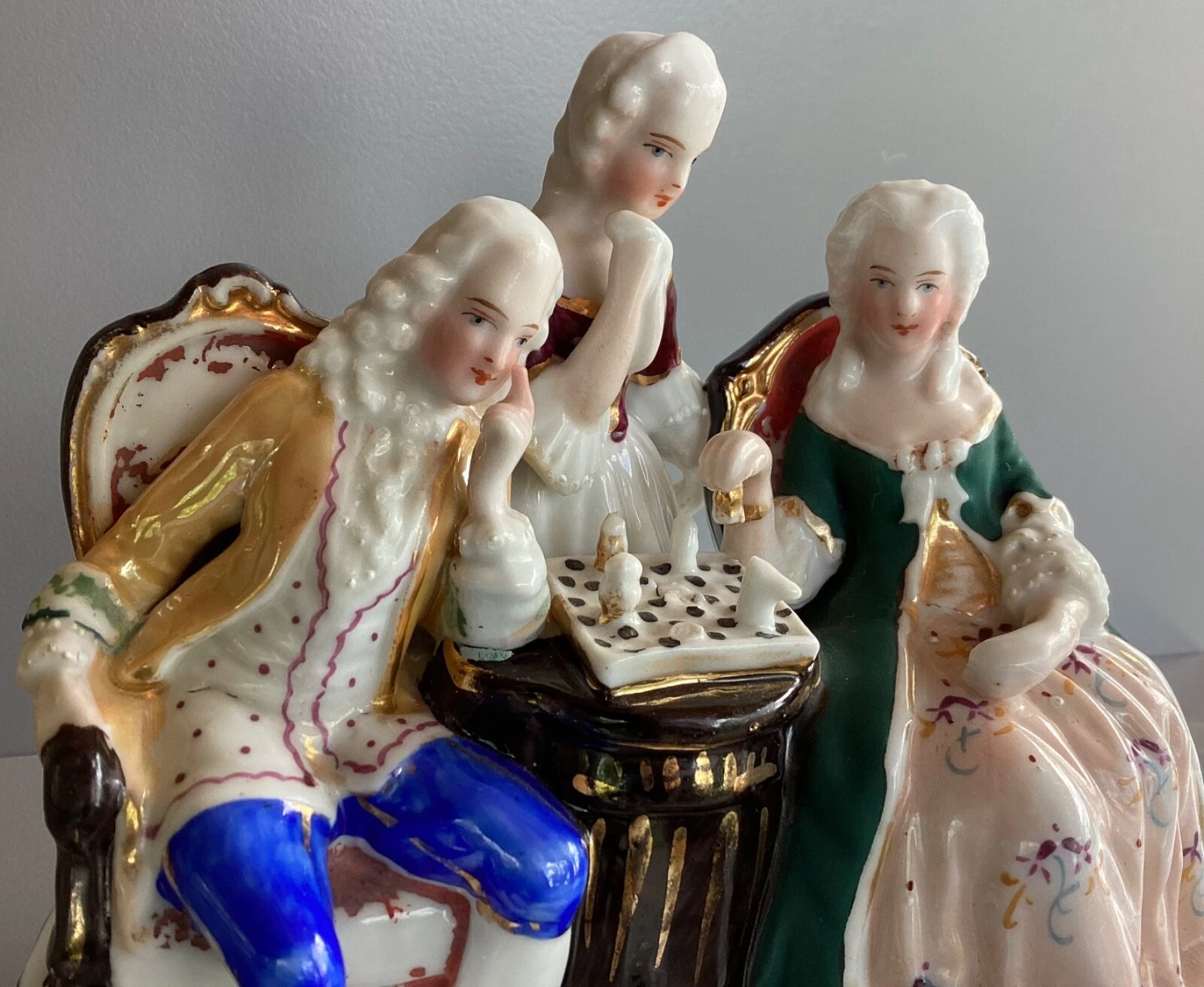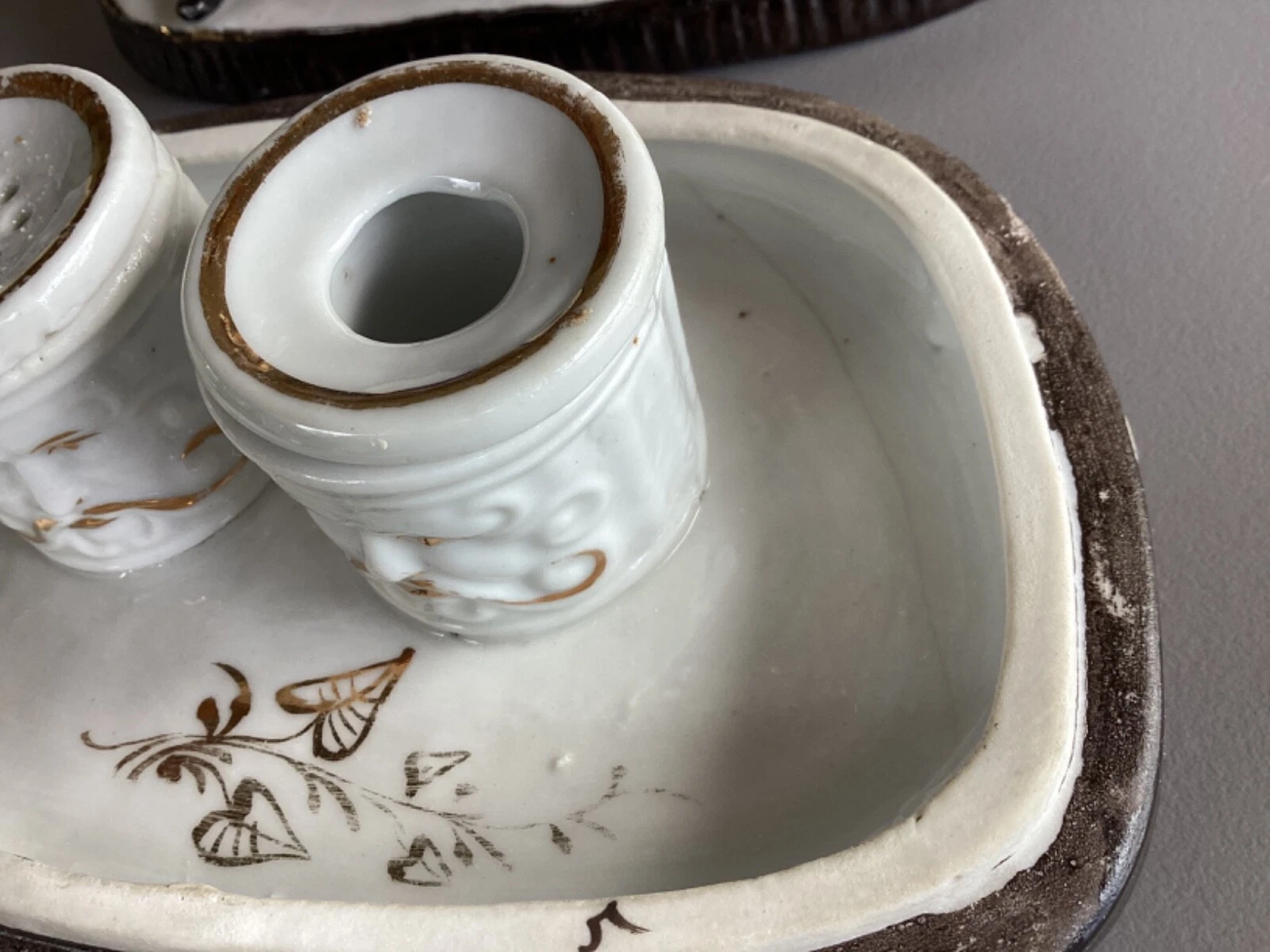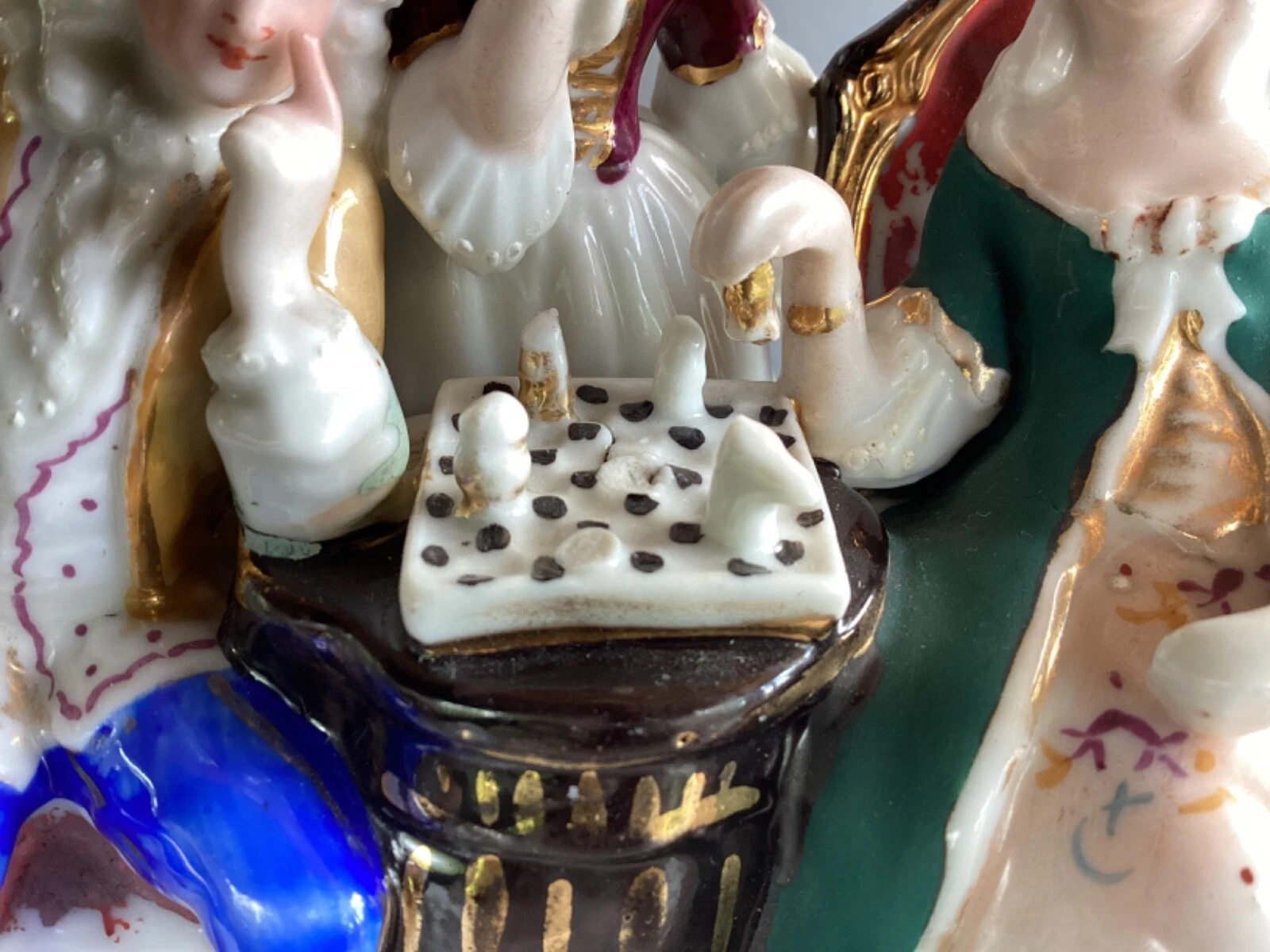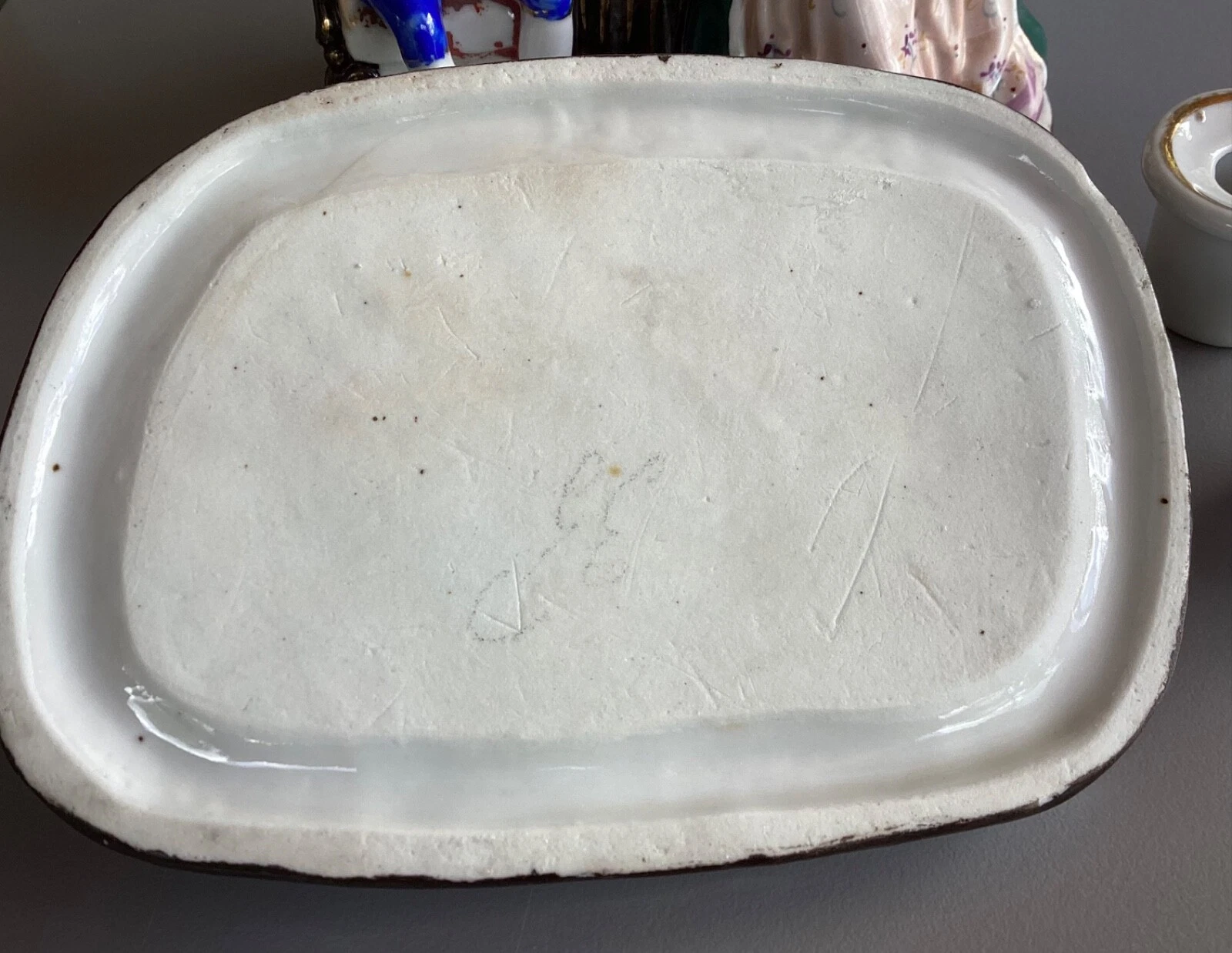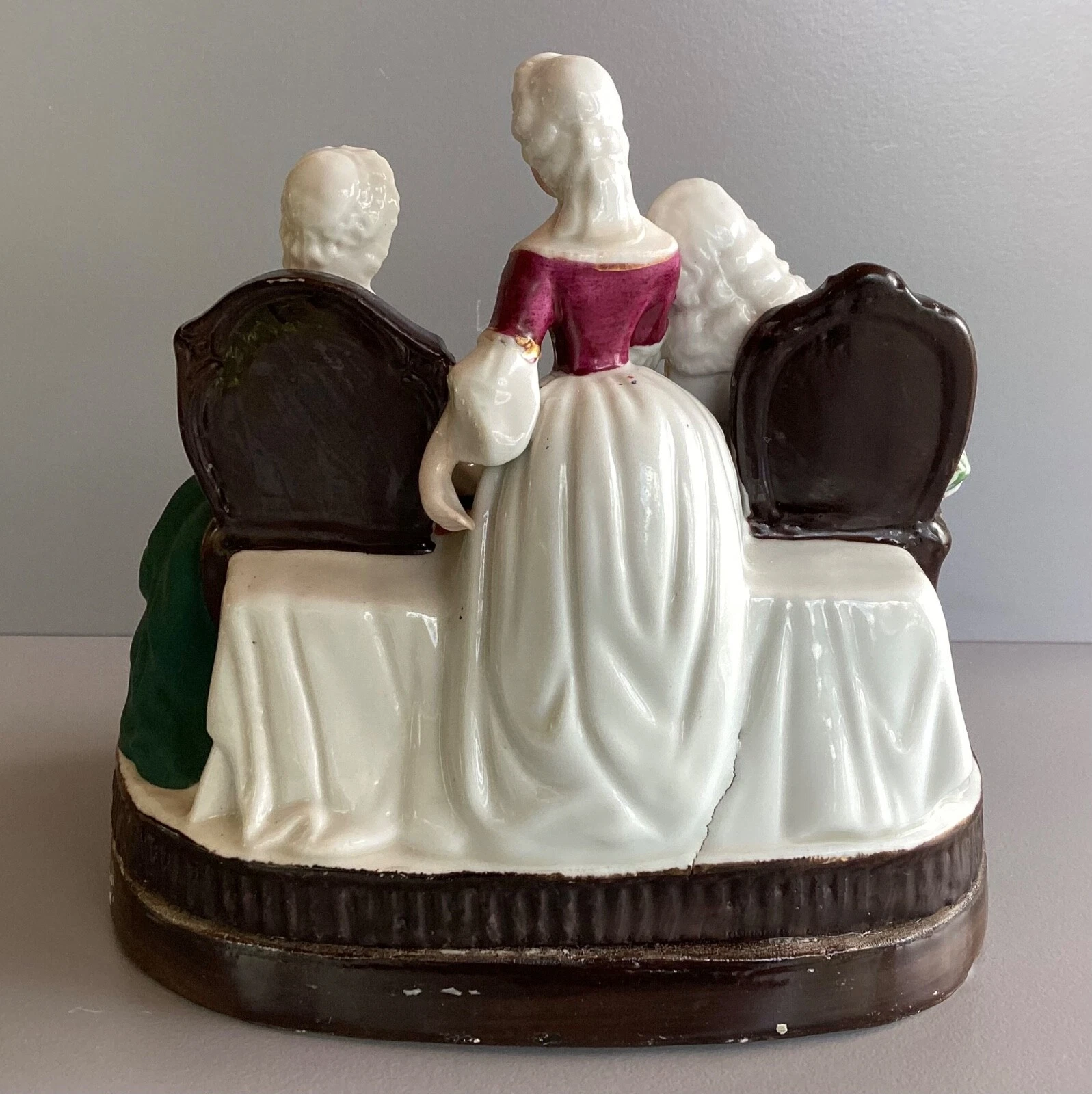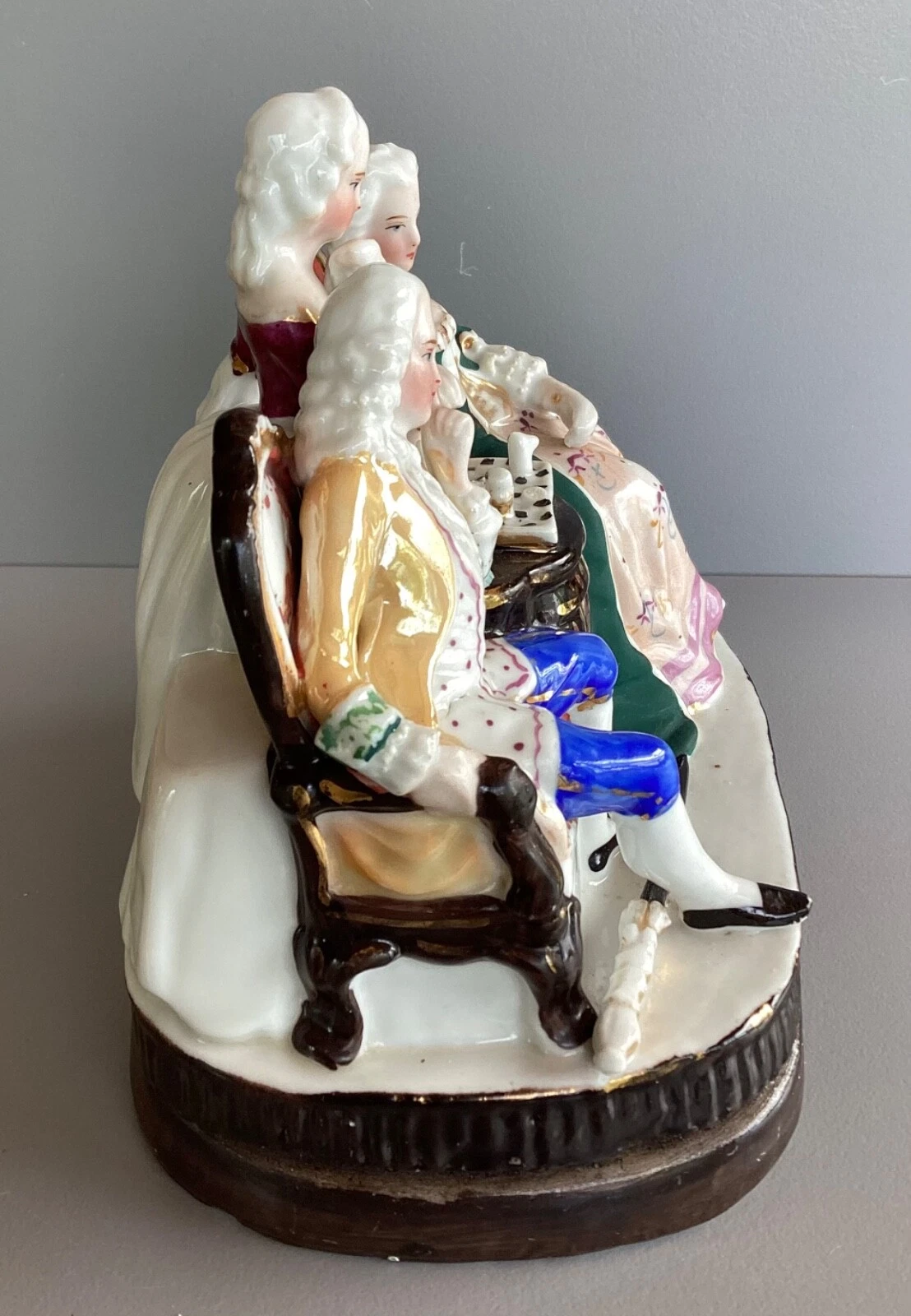
Conta & Böhme Porcelain Inkstand – Courtesans Playing Chess
| Categories | Ceramics/Porcelain Figural, Ceramics/Porcelain "Named" Makers |
| Material | Porcelain |
| Markings | Unmarked |
| Manufacturer | Conta & Boehme |
| Origin | Germany |
| Date or Era | circa 1870 |
| Measuring | 6” x 4 ½” x 5” high (Note: these were made in different sizes) |
This is a detailed and ornate porcelain inkstand manufactured by Conta & Böhme (Boehme). Three examples are pictured.
Composition and Scene: The main scene depicts three figures dressed in elaborate 18th-century court attire, engaged in a game of chess.
- The Gentleman: The male figure, perhaps a courtier, is seated on one side of a small table, intently focused on the chessboard. His clothing is detailed, featuring knee-breeches and a jacket.
- The Ladies: Two female figures, or court ladies, stand or sit opposite the gentleman. Their gowns are voluminous, and their poses lend an air of courtly drama and elegance to the scene.
- The Base: The figures are arranged on a decorative, scrolled, and gilded porcelain base, which is colored with a soft palette, with gilded accents.
Functionality and Hidden Compartment: The entire figural group is designed to lift off the main tray of the inkstand, revealing the utilitarian components underneath.
- The Tray: The lower, stable section of the inkstand is a tray with holders for the two main writing containers, an inkwell and sander (or pounce pot).
- The inkwell would hold the ink.
- The sander would hold a fine powder (pounce or sand) used to dry the fresh ink on paper. Its lid typically has small holes to shake the pounce onto the paper.
- “North Wind” Faces: The most distinctive feature of these containers is their molded decoration: a mustachioed face, sometimes identified as the “North Wind” or a similar mythological/decorative mask. This face, complete with flowing beard or hair, provides a slightly whimsical accent to the functional vessels.
Information About Conta & Böhme
Conta & Böhme was a prominent German porcelain factory known for its highly detailed and decorative figural pieces and novelty items in the late 19th and early 20th centuries.
- Location: Pößneck, Thuringia, Germany.
- Founding: The factory was established in 1851 by Johann Georg Conta and Christian Wilhelm Böhme.
- Production Focus: They specialized in decorative porcelain rather than dinnerware. Their most sought-after products were:
- Figural groups and figurines (often in the 18th-century style, like the inkstand described).
- Vases, trinket boxes, and other desk accessories.
- Novelty items, including whimsical tobacco jars and intricate beer steins.
- Style and Characteristics: Conta & Böhme pieces are typically characterized by:
- High quality of modeling and molding.
- Rococo and late-Baroque inspired designs, often drawing on the historical styles of Meissen or Dresden porcelain.
- Extensive use of elaborate and vibrant hand-painted colors, including a generous application of gold gilding.
- Decline: The factory continued production into the 20th century, eventually suffering a decline in the mid-20th century as consumer tastes and the economic landscape shifted.
Estimated value: $100 to $150
Content disclaimer. The information posted is the owner’s best knowledge and may not have been vetted by the SOIC. We welcome comments, corrections, and additions, working to make our website information comprehensive and accurate.
Join the Society of Inkwell Collectors (SOIC) – it’s free!
Founded in 1981 as a non-profit organization,
we are documenting inkwells (and accessories).
We’re here to help and inform!



